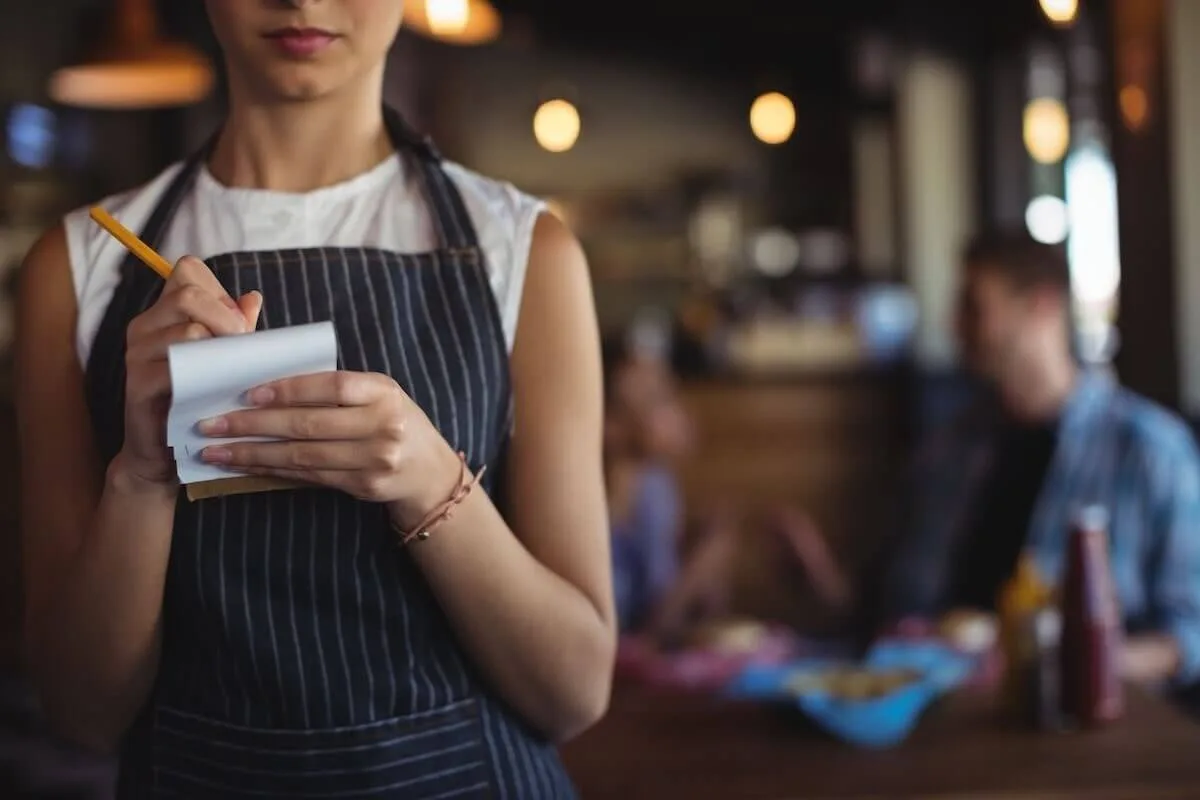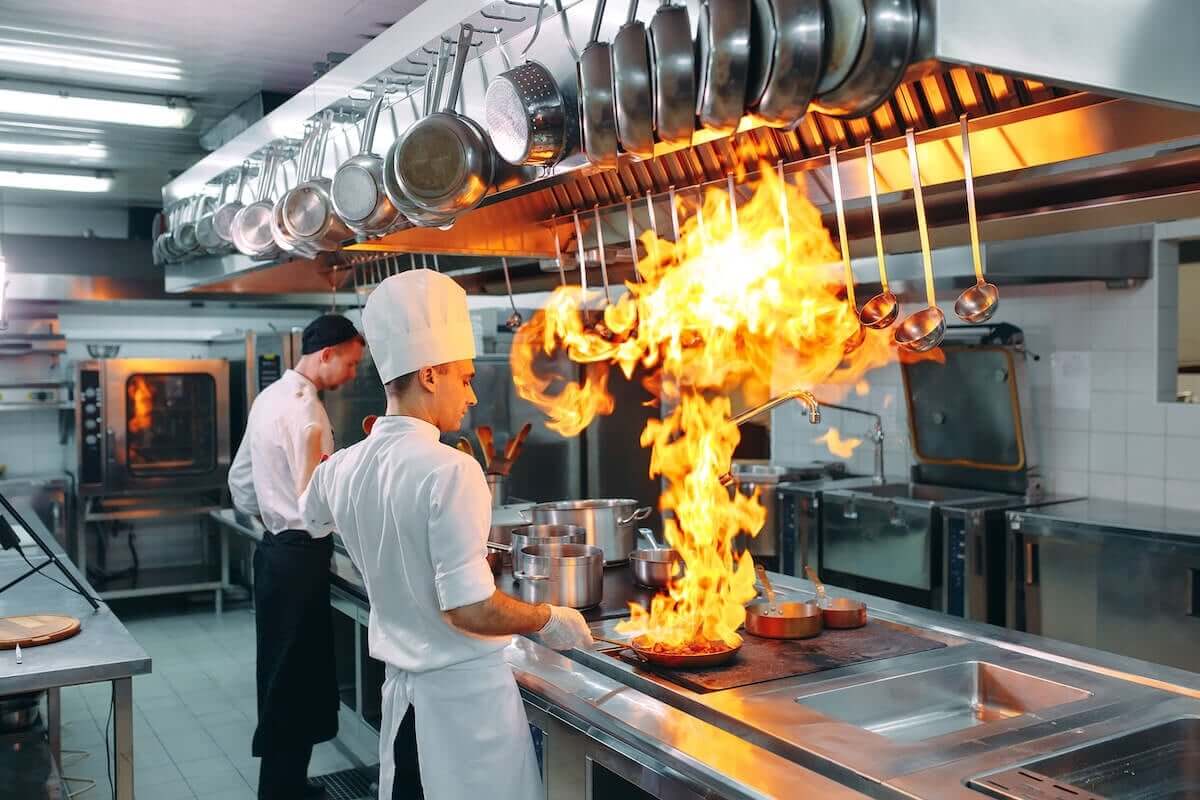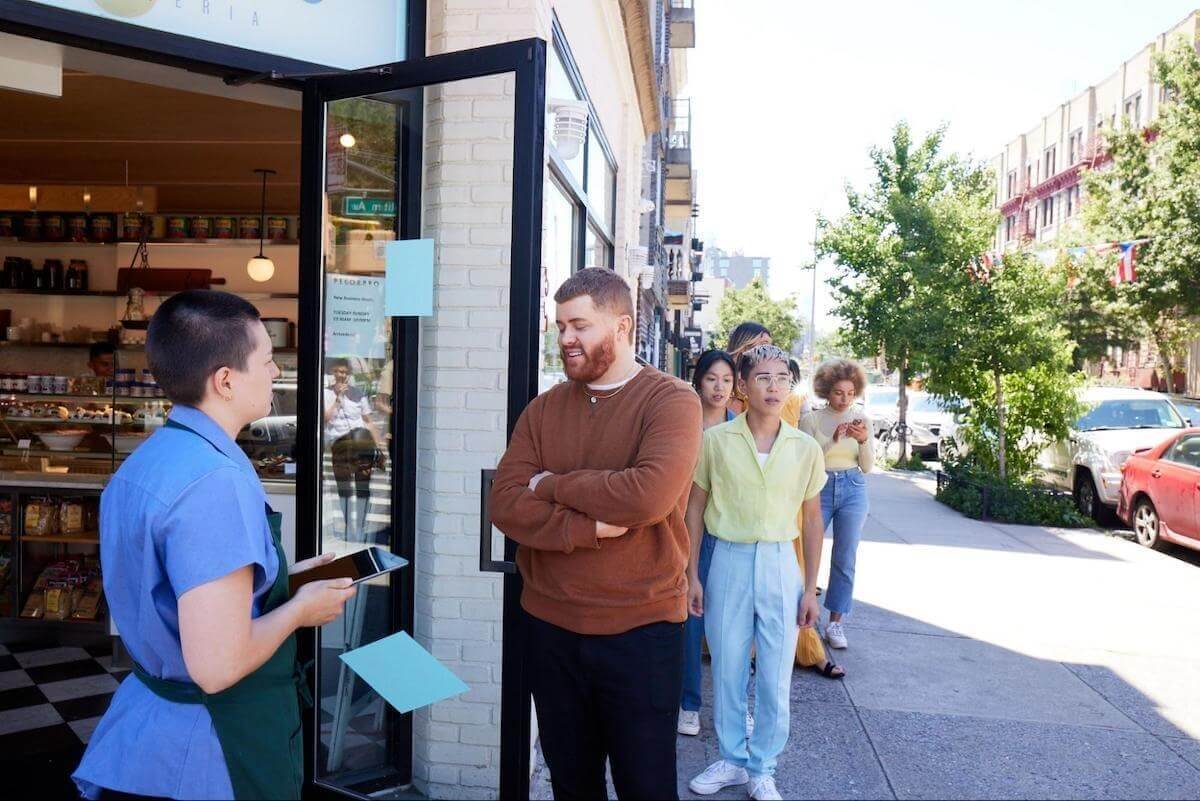11 restaurant branding ideas for a strong business presence
Skip the article and turn takeaways into action by scheduling a call with our team.
Creating or updating your restaurant’s brand identity can put your business on the map faster than you may expect. It’s much harder for restaurants to survive these days if they don’t have a brand personality, as potential customers are spending more time finding places to eat via social media and Yelp. Even successful restaurants could benefit from a rebranding that may bring in a whole new demographic of customers.
In this article we’ll cover the ever-changing world of restaurant branding, including what branding can do for your restaurant business. Most essentially, we’ll help you to grow your customer base with 11 ideas for how to create a powerful restaurant brand.
What is restaurant branding?

Restaurant branding is the process of deciding how you’d like your restaurant to be presented to the world. Successful branding should create a positive emotional connection between your business and your guests. Branding has a broad definition and encompasses many elements, including:
- Interior design
- Menu items
- Restaurant logo design
- Mission statement
- Website design
- Social media presence
- Takeout packaging
- Color palette consistency
- Audience targeting
Most restaurant owners don’t get into the business to create another cookie-cutter eatery. It’s all about standing out and being different from your competitors. If done correctly, you can develop a sense of brand loyalty from your target audience.
Why is branding so important?

A successful restaurant branding strategy is essential for all restaurants, and even more so for those planning to expand and open multiple eateries. The first thing you need is a clear vision of what your restaurant is. And while, certainly, your identity may evolve over time, you’ll want to have some clear, attainable identity goals in mind so that both you and your customers know what you’re all about.
Your restaurant brand identity can help to funnel loyal customers back to your business and bring in first-time patrons. What’s more, creating a strong brand that’s easily identifiable can help you stand out among competitors. Consider this: How many logos do you recognize from nationally and internationally known brands? What feelings and memories do you associate with them? Strong branding helps your restaurant burrow itself into your customers’ memories and will encourage them to come back.
The process of restaurant branding can be exciting and occasionally stressful. It’s a great opportunity to be creative: Every brand element choice you make, from your overall color palette to your menu typography, can help create an ambiance that’s unique to your restaurant.
Without a strong restaurant concept, your customers won’t have much to remember you by when they want to share their eating experience with friends. With a strong brand, you’ll be much more memorable and, quite likely, impressive.
11 ways to fortify your brand

Like many restaurant owners, you’re most likely a self-made, motivated individual. Your restaurant branding and marketing can potentially be tackled without any outside help.
You can get started immediately by considering the following questions:
- Who is my target audience?
- How would I describe my restaurant to someone who has never heard of it?
- What makes my food unique?
- What ambiance am I trying to provide?
- How do I fit into the local restaurant scene?
- What makes my restaurant different from others?
- What customer experience do I want to provide?
- What is our restaurant’s core ethos, and how do we treat our customers and employees?
1. Figure out your brand personality
Think about why you started your business. What did you want to accomplish? What drove you to create this restaurant? What can you provide your customers that other restaurants can’t? Don’t just think about these questions: Write them down as a mission statement. You’ll share that mission statement with all staff in a brand book, which we’ll get to soon.
When you’re deciding on your restaurant branding strategy, pay attention to the marketing of other brands that your target audience follows. Clearly conveying what you offer—and what your customers can expect—is one of the most important aspects of restaurant marketing and can be a key factor in getting new customers in the door.
For example, barbecue restaurants tend to have a fairly consistent theme. Wood paneling, long tables with benches, and walls covered with license plates and neon beer signs are all popular for a reason: They give that BBQ feel. The color scheme may reflect fire and smoke, with shades of red, orange, black, and brown. Fonts can be simple and straightforward, or reminiscent of Old West typescript.
On the other hand, a family-friendly vegan café whose mission statement is focused on sustainability would probably feature a more subtle approach to its logo and menu design. They might use calming colors like soft green and lavender and add in botanical graphics throughout the menu for an earthy look. They would have symbols to indicate organic, nut-free, and gluten-free dishes to guide guests to selections that work for their needs.
Similarly, consider your unique niche and the items on your menu and decide how these relate to the typography and imagery you’ll use. A fine dining establishment will likely be better served by dignified, muted colors and typography that borders on calligraphy, as opposed to loud colors and graffiti-style fonts. On the other hand, a vivacious, free-spirited restaurant or food truck with down-to-earth or innovative dishes can be more freewheeling with their brand colors and typography.
2. Decide on your brand voice
Your voice—the tone you use on your menu, in your social media, in emails, and so on—should also be consistent. This is worthy of special consideration: Done right, your brand voice can be one of the greatest distinguishing features of your restaurant.
Figuring out what kind of voice to use requires two things: knowing yourself and knowing your audience. A distinguished fine dining restaurant will want to use eloquent menu descriptions and understated social media posts that lend gravitas to the establishment. A more laid-back or funky eatery can be as jokey and irreverent as it wants, and food trucks especially can get away with humor. Whatever voice you choose, make sure it’s authentic—people can smell phony a mile away.
3. Create a brand book
Take your ideas about your brand personality and your brand voice and create a brand book—a codified, uniform instruction manual for staff to fully understand what your restaurant brand is all about. The brand book doesn’t have to be large, but it should demonstrate a strong visual design, since showing things like font and color palette is much easier than describing them.
When creating your brand book, make sure to include your mission statement, all visual standards with examples, tone and brand voice guidelines—also with examples, and any other brand characteristics that make you unique, like the way your servers should interact with customers, your signature menu items, or the entertainment you provide.
The main point of having a brand book is to ensure consistency throughout your establishment. This can be especially important in the restaurant industry, which sees heavy turnover. A brand book can quickly help new staff adapt to your identity and provide the kind of customer experience you’re aiming for.
Like a living thing, a restaurant evolves to adapt over time. Should any element of your restaurant’s identity change, be sure to update your brand book.
4. Establish a strong social media presence

Most people spend a significant amount of time consuming videos and story content on social media platforms. And for many avid scrollers, the dining experience begins on their phones. Curated Story photos of your mouthwatering dishes and short Instagram Reels of your bustling happy hour, along with a few key hashtags, could be the keys to reaching new guests.
We’d recommend that you find out who is the most tech-savvy among your staff and start an in-house social media team. Your millennial and Gen Z servers probably make TikToks about their work life anyway, so paying them a bit extra to create video content for your socials could be a smart way to reach new customers. It would almost be silly to not try to reach some of TikTok’s 150 million active monthly users in the U.S.
With the proliferation of TikTok, Instagram Reels, and even Facebook Stories, restaurants have a great opportunity to make short-form content on a consistent basis. If you’re not sure where to start, snap some videos of food coming out of the kitchen and of chefs working their magic, or highlight your menu items one by one.
On TikTok, look for trending sounds, and post your unique take on them. Videos that use popular audio tracks are easier to get in front of a lot of eyes quickly.
TikTok and Reels users love educational videos almost as much as funny ones. Showing them how your line cook perfectly dices an onion or showing a day in the life of a restaurant owner can bring in a rapt audience.
5. Lean on Yelp
Since we’re talking digital marketing, there are few better friends out there for restaurants than Yelp. If you haven’t claimed your restaurant on Yelp, you’re missing out. Yelp reaches 8x more consumers online than OpenTable. Once verified, you’ll be able to update your restaurant’s hours, address, phone number, and website, as well as your restaurant type and other information. You can add photos of your delicious dishes and share details about what sets you apart.
You can also respond to reviews, which tells your online audience that you’re tuned into the needs of your customers. This adds to your overall brand presentation and builds trust with people on Yelp.
6. Understand your market position

You have to understand your own restaurant, of course. But you also have to understand your competition. What makes you stand out from the rest? What advantages do you have over other restaurants that give you a competitive edge? These are the areas you’ll want to focus on when doing any marketing—on social media or anywhere else. Check to see what gaps exist in your local market and plug them. For example, if there’s no decent happy hour anywhere in your area, you’ve got a potential winner on your hands. Same story if there’s no late night spot or eating venue with live music or other entertainment.
Market gaps can also include menu items: If you have the best (fill in the blank) in the area and you know it, crow that from the rooftop. Introduce loss leaders on the appetizer, drinks, or dessert menu to get people in the door so you can then wow them with your main courses and ambiance.
To truly know your market position, you’ll have to conduct some thorough competitor research. Restaurant owners tend to know who the other restaurant owners in their area are, and they can get suspicious if you show up regularly to check out their spot (unless you’re friends, in which case it’s all good). However, there’s nothing illegal or immoral about asking friends or family to visit your competing establishments and ask them what they think. Make sure to ask what your competitors are doing better than you and what you’re doing better than them.
7. Consider refreshing your design

Particularly if you’ve been in business for awhile—and if you have some marketing spend—you can hire a branding agency to update your graphics and design. They could create new signage for you, modernize your restaurant website, and even help you strategically change your restaurant name, if you’re considering that option.
You could also take things into your own hands. You’ve probably updated your restaurant menu design before as dishes come in and out of season. For a design refresh, lots of restaurant owners are using templates on Canva, but you could use any platform you’re familiar with. If you need a little help with your web design or any other rebranding aspects, using a freelancer is an affordable way to go.
After you’ve made changes, be sure to update your brand book and let your staff know.
8. Use smart signage
Speaking of signs, make sure yours feature your brand colors, your logo, and perhaps a tagline describing your cuisine or restaurant style. Some restaurants have even gone viral based on their signage: El Arroyo in Austin is famous for having witticisms posted on the sign outside their flagship location, which often make customers laugh and sometimes make their way around social media. Show off some creative flair, and you’ll be remembered fondly.
The phrases you choose to represent your restaurant can show a lot about your brand personality. For El Arroyo, the signage indicates it’s a fun and laid-back establishment. Pubs do this all over the world: A sign reading “Buy two beers and get the second one free!” or similar can indicate that customers will have a good time. Similarly, an upscale restaurant may advertise specials on a chalkboard, especially if one of the staff is artistically talented and interested in earning some extra money.
9. Optimize your website

People have become very used to booking reservations online, and walk-ins aren’t as common as they once were. Chances are that customers will find you online before they even see your restaurant on the street. Boosting your search engine optimization (SEO) by targeting keywords or pushing social media marketing—or hiring an SEO team to do this for you—is a great way to get found, especially in a competitive market. “Steakhouse New York” is an exceptionally valuable keyword, for example, so if you have a steakhouse in New York, it may be worth spending some cash to boost your organic search traffic.
The way your website looks (and how well it runs) will likely be your customers’ first impression of your restaurant. Make sure your site is updated with modern lettering and layouts. Web hosting design companies such as Squarespace will take care of this without the expense of a web designer.
The single most important thing a restaurant can do on their website is to make sure their menu is easily accessible. The menu is the most important piece of information a customer has about a restaurant, so getting that in front of eyeballs is nonnegotiable.
Your website should also tell your brand story, give insight into your core values, and include high-quality photos of your restaurant and your food. Provide diners with all the information they need on how to reach you and how to make a reservation.
And hey, this is where Yelp Guest Manager comes in. Customers expect to be able to make reservations online, as well as check for open tables or hop on a waitlist from home. When quoted wait times are up to 90 minutes, guests reserving online with Yelp are 10% more likely to wait it out.
Your website should also prominently highlight all upcoming events and specials, which you can share on social media. If you run a sports bar, for example, make sure you list which games you’ll be showing and when. If you’ll be having autumn specials, be sure to update your website with the new seasonal menu options. Maintaining a vibrant website can help you stand out—especially since many restaurants’ websites are lackluster.
10. Make your interior match

Your brand identity starts with your online presence and culminates with your diners sitting down inside your restaurant or on your patio. Your brand personality can truly shine in your restaurant design. This can apply to your décor, how you lay out your tables, the dishware you have, the music you play, your staff uniforms, how your servers greet tables, the takeout containers, and so much more. Your brand can be reinforced at every touchpoint.
Your brand colors should be consistent throughout your business, in person and online. Your entertainment options (or lack thereof) are another excellent way to highlight your brand identity: Have a pool table? Get it felted in your own colors. Do you host events like live music? Make sure your customers get notified of who’s playing and when.
Screens are an interesting conundrum in a restaurant. They should only be used to benefit the restaurant and not simply left on as background distractions. Playing movies or TV shows on mute is a no-no. That’ll disrupt conversation and leave customers frustrated. If you do have televisions, it’s wise to either turn them off if there is no event happening or use them to display a slideshow of your seasonal offerings and specials.
11. Get neat business cards
It may sound old school, but it remains a smart idea. Your business cards should include essential information like your website, hours, and phone number and should feature your logo and brand colors. Consider mentioning your special dishes or other offerings that make you stand out from your competitors. In addition, including a QR code on your business card can get people linked up to your online presence.
After all, your online marketing is your digital business card—which can be accessed by anyone, at any time. But it also never hurts to have tangible business cards ready to hand out. And if you’re located in a busy walking area, it’s wise to leave a stack of business cards on your menu stand outside the restaurant so customers who are not currently hungry will remember to come back when they are.
There’s no better time than now
Now that you have some new restaurant branding ideas, you’re on your way to reinventing your business and getting more diners in the door.
A great way to modernize your restaurant quickly is to use Yelp Guest Manager to streamline your front-of-house operations. Guest Manager gives your guests access to a user-friendly reservation system that minimizes wait times.
It also helps servers provide top-of-the-line service through customizable front-of-house management, guest data that gives servers clues on previous orders, and much more. On top of that, the third-party integrations with delivery apps and POS systems is unmatched.
Curious to see how it works? Get a demo to find out what Yelp can offer your brand.